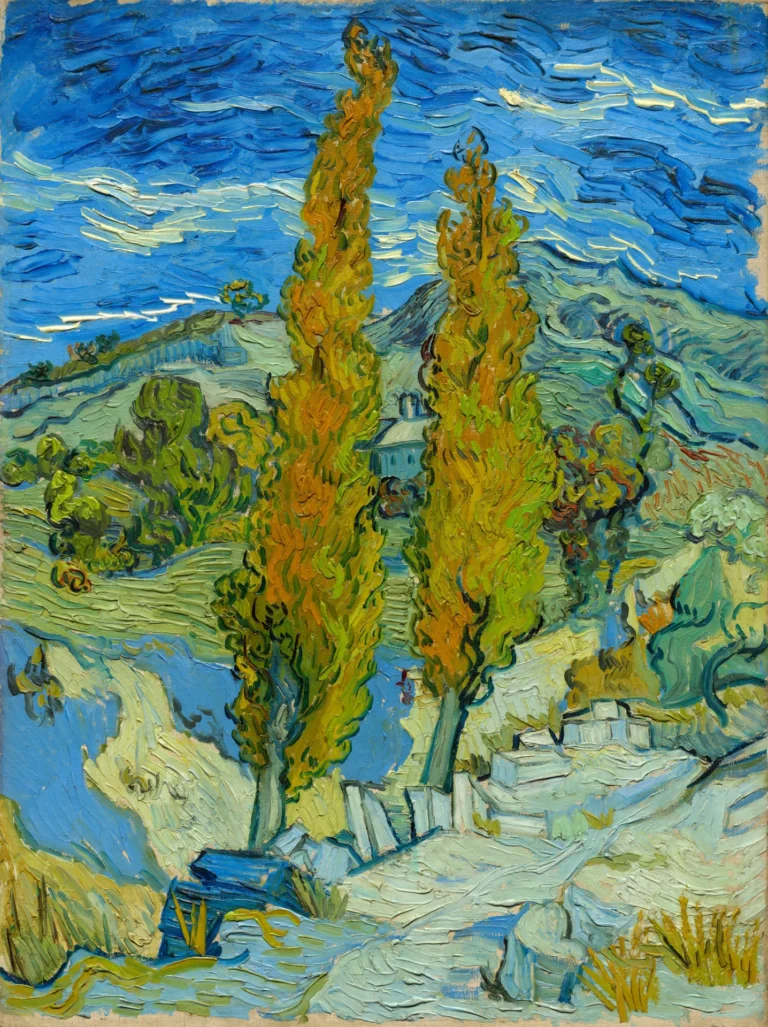Two Poplars In The Alpilles Near Saint-Rémy (1889)
This exquisite autumn landscape, painted by Vincent van Gogh in 1889, features two twisting poplar trees set against a dramatic sky, embodying his emotional connection to nature. Created during his stay at an asylum in Saint-Rémy, the artwork reveals Van Gogh's mature style, characterized by intense colors and expressive brushstrokes. The vibrant energy captured in this piece resonates with viewers, making it a splendid representation of his artistic genius during a pivotal moment in his life.
1889
About the Artwork
The story behind Two Poplars in the Alpilles near Saint-Rémy is deeply intertwined with Van Gogh's tumultuous life. After a series of mental health crises, he voluntarily admitted himself to an asylum in 1889. Initially confined to his room, he was later permitted to paint outdoors, amidst the natural beauty of the Alpilles. This newfound freedom ignited a creative surge, allowing him to channel his emotions into his artwork. The two poplar trees symbolize resilience and strength, mirroring Van Gogh's own struggles while capturing the essence of the surrounding landscape with a dynamic and vivid palette. This painting exemplifies a pivotal transitional phase in his career, where he transformed pain into visual poetry.
Did You Know
Liked what you see? Add it to your collection.
Enjoyed reading? Share it.
... continued
Creation and Location
Van Gogh painted this autumnal landscape while he was a patient at an asylum near Saint-Rémy in southern France. Initially restricted to painting in his room, he was later allowed to work outdoors, which led to a period of prolific creativity.
Style and Composition
The painting showcases the full power of Van Gogh's mature style. It features two poplar trees that twist and lean against a darkening sky, characterized by intense colors applied with thick, expressive brushstrokes. This technique conveys his emotional response to the windswept landscape.
Medium and Dimensions
The painting is executed in oil on fabric. The unframed dimensions are 61.6 x 45.7 cm (24 1/4 x 18 in.), while the framed dimensions are 81 x 66.7 x 7.3 cm (31 7/8 x 26 1/4 x 2 7/8 in.).
Collection and Provenance
The painting is part of the collection at the Cleveland Museum of Art, having been bequeathed by Leonard C. Hanna Jr. in 1958 (accession number 1958.32). It is housed in the Modern European Painting and Sculpture department.










